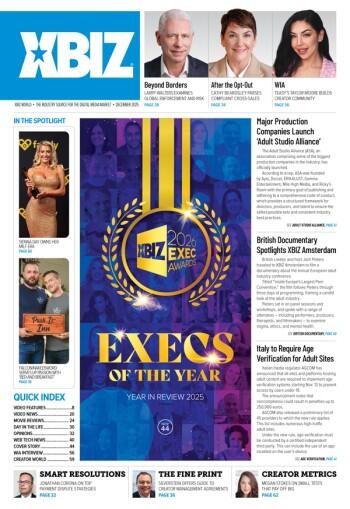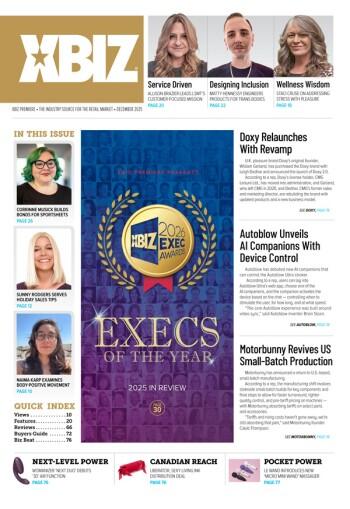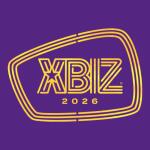I’m writing this article from seat 5F. The window. It’s sunny where I’m taking off and it will be cloudy where I land. I’ve packed a jacket but no skis (would have been fun but this is a work trip). I’m on the road again for face-to-face meetings.
That’s me. You? You work in an internet business. Why else would you be reading this article in this particular magazine? You may also be someone who travels a lot (or if not you, then certainly someone in your company is often traveling).
Why is the expense and time of being face-to-face still necessary? Shouldn’t our reports, our endless chats and our video conferences be enough? Nope. We still need to meet people face-to-face.
The promise of the internet was that we could reach the world instantly. That the world would come to us. We wouldn’t have to leave our hometowns.
Today we consume and produce more information than ever. Why is the expense and time of being face-to-face still necessary? Shouldn’t our reports, our endless chats and our video conferences be enough?
Nope. We still need to meet people face-to-face.
I’ll probably being seeing you soon, reader. Because, in the near future, you (or someone from your team) will also get in a plane to go somewhere and we will meet up.
In December, my executive team spent two days face-to-face with one of the top executive coaches in the world. I had recommended that we do it by video (easier to schedule, cheaper, lots of my team members are all over the world anyway). He’s based in Chicago. The meeting happened in Europe.
Over the course of the two days he facilitated discussions about our company’s future. We talked about what we do, why we do it and how we do it. We developed ways to improve each of those things. We have a big vision for ourselves and for our company. We’ll be incorporating these changes over the course of 2018 and beyond.
The two days were intense. Each of us faced uncomfortable facts. We explored the reality of our company and ourselves. They were things that we normally don’t discuss because of fear. There were truths we had hid and missed opportunities for growth.
Could it have happened remotely? Yes. It could have. But it would have been much less powerful. Maybe we would have gotten 30 percent of what we produced with most of us sitting in a room together face-to-face. The things that needed to be communicated would have stayed below the surface.
Since face-to-face meetings are necessary for us to meet our goals, then how do we get the most out of them? How do we get the highest return on investment (ROI)?
There are three key tools or “technologies.” We use all of them at the one-day, face-to-face event we run with XBIZ called the Paysite Meetup. Check out PaysiteMeetup.com to attend one.
First, focus on high quality information. Most of what we get (and give) in this industry is Low Quality Information. It’s practically useless. We all complain about it. But we all participate in it. How did we change it at the Paysite Meetup?
It helps to accept that we have “monkey minds.” Our thoughts are electrical/physical activities that occur randomly. They’re a jumble. At Paysite Meetup we accept that reality. We organize those thoughts into meaningful information. We do that using a tool called Ideal State Action Planning (ISAP).
Tool #1: Ideal State Action Planning (ISAP)
The ISAP came out of work some engineers did in the 1970s on information processing. We create three categories: Present, Pathways and Ideal. Everything we talk about goes into one of those three categories. At the end of the conversation we have a map of our thinking about where we are, where we want to go and how we want to get there.
It’s a tool that I learned from some of the most successful people I know in business. It’s no surprise that many people who have attended Paysite Meetups are now using this tool in their own businesses and conversations with partners. It works.
Tool #2: Information Saturation
The next step for getting high quality information is to get to information saturation. This is the point where you know the answer to 80 percent of the questions you ask. 100 percent isn’t the goal. Just that you know the other person’s thinking well enough to accurately predict what they are going to say about the topic you are discussing four out of five times. Until you’ve reached this point you have low quality information ... you haven’t really grokked what the other person has to share with you. Your job isn’t done.
Tool #3: Integrated Information
You are also looking for integrated information. You don’t want some casual response or some partial information that may turn out unreliable or not true.
You can see that you have integrated information by observing eye movements. You want to get visually, kinesthetically and emotionally integrated information. You get this by asking questions and observing eye movements. Do the eyes go up? Are they in the middle? Do they go down? Eye movements reflect different types of information recall and processing. Just one direction (up for example) is not enough for you to have gotten integrated information on the topic at hand. These concepts were first developed in neuro linguistic programming (NLP).
When we say that everyone in his industry talks a lot of bullshit, we’re right. Everyone everywhere talks a lot of bullshit. It’s your job to sort through it to get to “high quality information.” The best way to do that in person is to use ISAP, information saturation and information integration.
To use all three tools you need to learn how to create safe conversations. They happen at the Paysite Meetup. In fact, that’s the big secret. People feel safe to share. They know they will be listened to by others. And they know they will learn from other people who are doing the same thing. Without safety, none of this will work. The best book I’ve read on creating safe spaces for conversations is “Crucial Conversations.”
When people tell me “that’s the best meeting I’ve had in the last X years” they mean it. And it happened because we were together, face-to-face, in a way that maximized each other’s ROI.
Use these tools to get the most out of your face-to-face meetings going forward. Don’t keep wondering if you should have just stayed home and saved the time, money and hassle. Use these three “technologies” in a safe environment to get what all of our other communication tech just can’t provide.
Looks like we are landing now. The flight attendant just told me to fold my tray table and close my laptop. See you soon!
Mitch Platt is co-founder of Vendo, which uses artificial intelligence to power its billing platform that allows merchants to continuously improve and grow their businesses.







